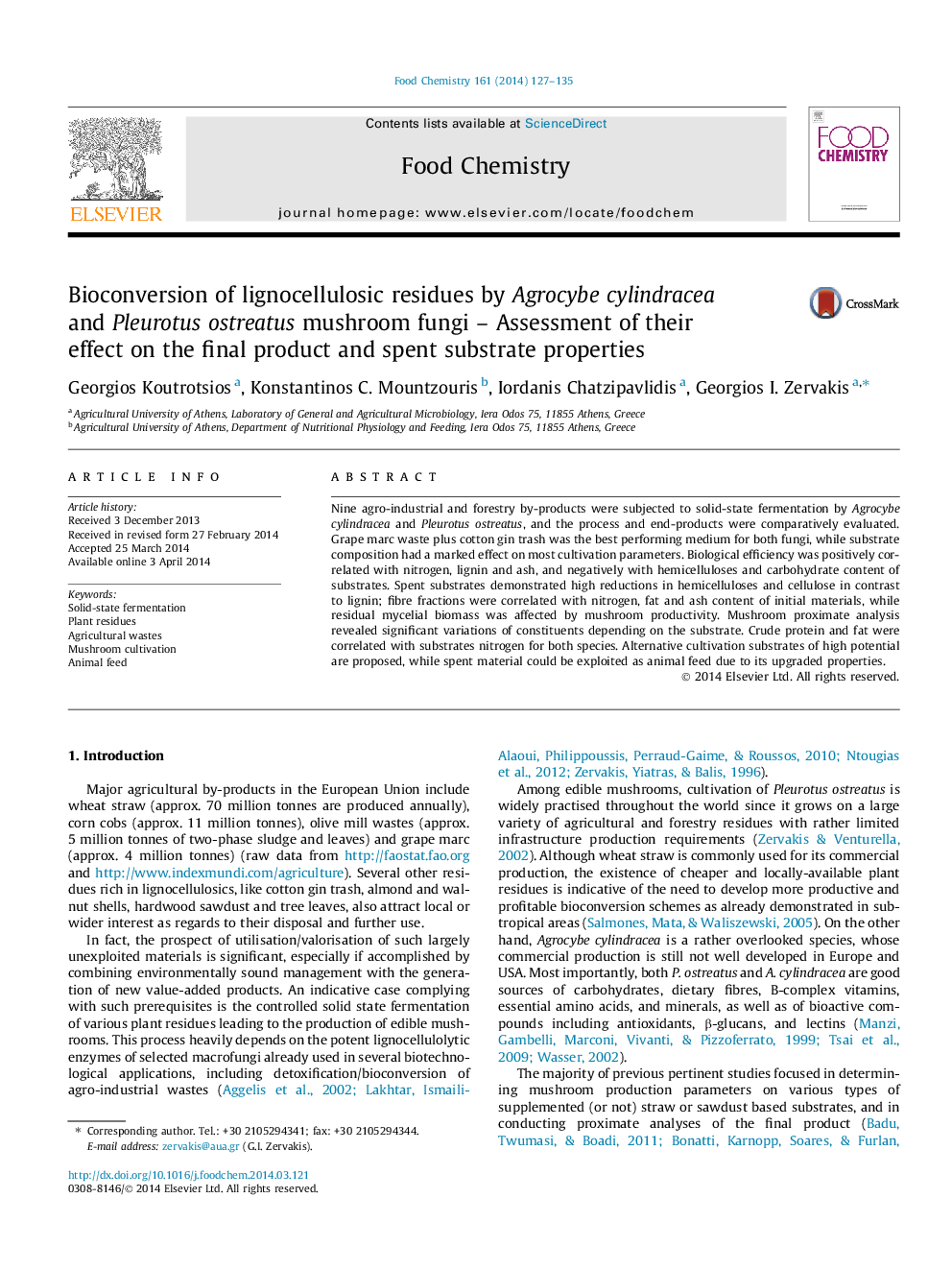| Article ID | Journal | Published Year | Pages | File Type |
|---|---|---|---|---|
| 7596895 | Food Chemistry | 2014 | 9 Pages |
Abstract
Nine agro-industrial and forestry by-products were subjected to solid-state fermentation by Agrocybe cylindracea and Pleurotus ostreatus, and the process and end-products were comparatively evaluated. Grape marc waste plus cotton gin trash was the best performing medium for both fungi, while substrate composition had a marked effect on most cultivation parameters. Biological efficiency was positively correlated with nitrogen, lignin and ash, and negatively with hemicelluloses and carbohydrate content of substrates. Spent substrates demonstrated high reductions in hemicelluloses and cellulose in contrast to lignin; fibre fractions were correlated with nitrogen, fat and ash content of initial materials, while residual mycelial biomass was affected by mushroom productivity. Mushroom proximate analysis revealed significant variations of constituents depending on the substrate. Crude protein and fat were correlated with substrates nitrogen for both species. Alternative cultivation substrates of high potential are proposed, while spent material could be exploited as animal feed due to its upgraded properties.
Related Topics
Physical Sciences and Engineering
Chemistry
Analytical Chemistry
Authors
Georgios Koutrotsios, Konstantinos C. Mountzouris, Iordanis Chatzipavlidis, Georgios I. Zervakis,
